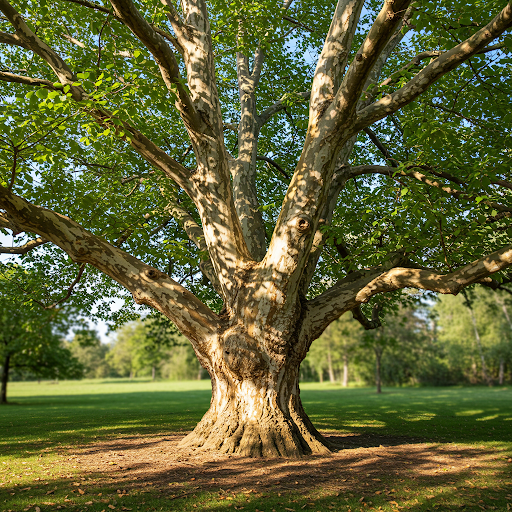Oriental Plane Tree Seeds
Oriental Plane Tree Seeds
Couldn't load pickup availability
Oriental Plane Tree
(Platanus orientalis)
Platanus orientalis, commonly called the Oriental plane or Old World sycamore, is a large, majestic deciduous tree native to southeastern Europe and western to central Asia.
Appearance:
Platanus orientalis grows into a broad, massive tree with a thick trunk and spreading branches. Its leaves are large, deeply lobed (somewhat maple-like), and turn yellow, orange, or brownish in the fall. The bark peels off in patches, giving the trunk a mottled, smooth look of cream, green, and gray.
Size:
In ideal conditions, it can reach 20–30 meters (65–100 feet) or more in height, and can spread nearly as wide.
Flowers and Fruits:
The tree produces small, inconspicuous flowers in spring. By late summer and fall, round fruit clusters (like balls) appear, which persist into winter. These balls are composed of tiny seeds that are dispersed by wind.
Habitat:
It prefers moist soils (often along rivers and streams) but can tolerate urban pollution and drought once established. It's hardy and very adaptable.
Growth Requirements:
Sun: Full sun is best.
Soil: Tolerates a range of soils but grows best in rich, well-drained soils.
Water: Likes moisture, especially when young.
Climate: Grows well in temperate climates and is relatively cold-hardy (USDA zones roughly 7–9).
Cultural and Historical Importance:
The Oriental plane has a rich cultural history—ancient Greeks and Persians planted it near temples, public places, and palaces. It's often associated with shade and learning, famously in Aristotle’s school.
Notable Traits:
It is often long-lived, sometimes surviving several centuries if growing conditions are favorable. Its large size and beauty make it popular in parks, boulevards, and large gardens.
Zones: 7 to 9
Germination Range: 40-60%
Stratification Requirement: None required
Planting Instructions:
Sowing the Seeds:
Sow seeds in a tray or pots filled with a well-draining potting mix (a mix of compost, sand, and peat works well).
Press seeds lightly onto the surface and barely cover them with a thin layer of soil or sand — they need some light to germinate.
Water gently to settle them in.
Germination Conditions:
Keep the soil moist but not waterlogged.
Place the pots or trays in a warm location with indirect sunlight.
Germination typically happens within 2 to 6 weeks after sowing.
Care for Seedlings:
Once seedlings have several true leaves, they can be carefully transplanted into individual pots.
Grow them on in a bright, sheltered spot.
Harden them off (gradually expose them to outdoor conditions) before planting them outside.
Planting Outside:
When the young trees are strong enough (at least one growing season old), transplant them to their final position.
Choose a sunny location with deep, moist but well-drained soil.
These trees can grow very large, so allow them plenty of space.
Share


